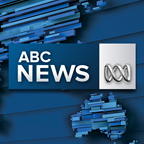
Posted
 Photo:
Ron Williams aka 'Big Ronnie' — just one of many pictures uncovered by Storylines. (Supplied: State Library of Western Australia)
Photo:
Ron Williams aka 'Big Ronnie' — just one of many pictures uncovered by Storylines. (Supplied: State Library of Western Australia)
"It's pretty magical." That's how Damien Webb, Indigenous liaison officer at the State Library of Western Australia, describes his work.
Mr Webb runs the Storylines project, which is dedicated to helping Aboriginal people find historic photographs of their families and communities which are held at the library.
More than 7,000 photos are available online for Aboriginal people in Western Australia to search, and many have already found images of a parent or grandparent they'd never seen before.
"We wanted to remove all the barriers so that Aboriginal families could rediscover a lot of this history and reconnect to their past, which was often stolen or lost through government policies," Mr Webb said.
There are several million photographs in the State Library and staff estimate that around 10 per cent of them are of Aboriginal people.
But when donated to the library they rarely had information about who the people in the images were.
 Photo:
Maria and Jill pictured at Cundeelee Mission in 1954. (Supplied: State Library of Western Australia)
Photo:
Maria and Jill pictured at Cundeelee Mission in 1954. (Supplied: State Library of Western Australia)
"There is this incredible photographic resource, but the problem with a lot of the historical photographs is that they were all donated by non-Aboriginal people — station owners, government workers, missionaries, people that had a direct hand in enforcing the policies affecting Aboriginal people," Mr Webb said.
"Those photos were usually anthropological or ethnological or had some agenda that was not for the Aboriginal families being photographed but was to prove some other point or to keep a record of these people.
"Those photos were never returned to Aboriginal families; there was a pretty widely held assumption that Aboriginal people in WA and the rest of Australia would just die out."
The Storylines website offers a range of ways people can search historical images and potentially find a family member.
"You can search by name, by place, wherever we have managed to identify people," he said.
"A lot of photos just said things like 'Native, Kimberley' whereas now after three or four years we know the names of some of those men, so people can find them that way.
"You can even search spatially on a Google map, by drawing out the area you know is your country, and the system will find everything that falls within that geographical space."
 Photo:
Frances and Lois Phillips on the front of a car, circa 1950-60s. (Supplied: State Library of Western Australia)
Photo:
Frances and Lois Phillips on the front of a car, circa 1950-60s. (Supplied: State Library of Western Australia)
For people who may have no family photographs, or even know who their family members are, the Storyline project can provide extraordinary reconnections.
"We had someone find out he had a twin brother during one of our sessions," Mr Webb said.
"The next week he came back with him, having reconnected at 45 years old.
"We do a lot of family history at the library generally, but in the Aboriginal context it is much more visceral and direct.
"This isn't a funny story about a great uncle who was deported for something weird from England; this is finding out the name of your mother and her parents and where you come from."
 Photo:
Killing, butchering and cooking a kangaroo in a campfire near Cundeelee 1977. (Supplied: State Library of Western Australia)
Photo:
Killing, butchering and cooking a kangaroo in a campfire near Cundeelee 1977. (Supplied: State Library of Western Australia)
Even the more distressing images can be significant for families who can see past the context to the person within.
"I've spoken with elders here who have looked at those quite famous photos of Aboriginal men in chains from the early 1900s, and they are saying, quite honestly, that they look past the chains and see what their great-grandfather looked like and how he carried himself, his facial features," Mr Webb said.
"Having to look through that trauma is pretty common because a lot of the photographs were not taken by Aboriginal people."
The monthly Storylines workshops have also brought to light rare images that were taken by some Aboriginal people which have since been added to the library collection.
"There's a photographic collection by a woman named Mavis Walley who grew up in the Goomalling reserve and she managed to keep this camera for about 30 years, so there is this amazing series of photos of these Aboriginal families," Mr Webb said.
"The differences between those pictures and the government photos of the era are quite striking.
"They really do look just like everyone else's family photos; that idea that gets lost in the government record.
"There was joy, there were birthdays, celebrations, people fell in love, life did continue even in these quite traumatic spaces."
Every month, staff at the library are able to scan and upload a few hundred more photographs to the Storylines collection.
"You don't need a login, you don't need a library card, it is open access and people can leave stories and comments on each item to help us learn and to inform us when things are up that shouldn't be up."
Topics: indigenous-aboriginal-and-torres-strait-islander, indigenous-culture, photography, library-museum-and-gallery, perth-6000









 Add Category
Add Category
